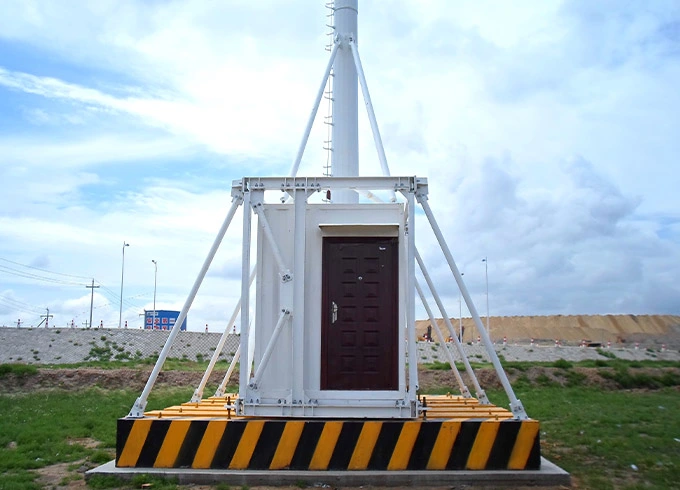400 KV transmission line towers are critical components of modern energy grids, designed to transmit bulk electricity efficiently over long distances. Our high-strength, corrosion-resistant 400 KV steel transmission towers combine durability, safety, and compliance with international standards, making them ideal for power utilities, renewable energy projects, and grid expansions.
| Voltage | 400KV |
| Tower Type | Suspension Tower, Tension Tower, Dead Tower, Substation Structure |
| Height | 10M-100M |
| Circuit | Single / Double Circuit |
| Material | 1.High strength low alloy structural steel: Q420B which is equivalent with ASTM Gr60 2.High strength low alloy structural steels: Q355B which is equivalent with ASTM Gr50 or S355JR 3.Carbon Structural Steel: Q235B which is equivalent with ASTM A36 or S235JR |
| Welding | AWS D1.1 |
| Surface treatment | Hot dip galvanizing /painting/Powder coating |
| Hot dip galvanization | GB/T 13912-2002, EN ISO 1461,ASTM/A123 or equivalent |
| Welding Standard | AWS D1.1, AS554, AS 4100 standard or equivalent |
| Earthquakeproof Grade | Grade 8 |
| Ice wrapping | 5-10 mm |
| Verticality | 1 / 1000 |
| Working Temperature | - 45°C -+ 45°C |
| Nuts& Bolts | Mainly ISO 898 grade 6.8 and 8.8 bolts for Both Chinese, ISO and DIN standard |
| Working lifespan | 30/50 years |
400 kV electrical towers are critical components in modern power transmission networks, designed to handle ultra-high voltage (UHV) for efficient long-distance electricity distribution. Here are their key applications in power grids:
1. Long-Distance Bulk Power Transmission
400 kV towers enable high-capacity power transfer over extended distances with minimal energy loss, connecting remote power plants (e.g., hydroelectric, thermal) to urban demand centers.
2. Grid Interconnection & Stability
These towers link regional grids, ensuring reliable power supply and load balancing. They support synchronization between decentralized renewable energy sources (wind/solar farms) and traditional grids.
3. Renewable Energy Integration
With increasing renewable adoption, 400 kV infrastructure transports clean energy from wind/solar farms to substations, reducing curtailment and improving grid resilience.
4. Industrial & Urban Power Supply
They feed power-hungry industries (e.g., manufacturing, data centers) and megacities, meeting rising electricity demands while maintaining voltage stability.
5. Cross-Border Electricity Trade
400 kV lines facilitate international power exchanges, enhancing energy security and economic cooperation between neighboring countries.

